Crumbly, buttery shortbread is a treat that's simple to make and tastes fantastic homemade. With only three ingredients, you can whip up a batch of buttery shortbread biscuits that are perfect for any occasion.
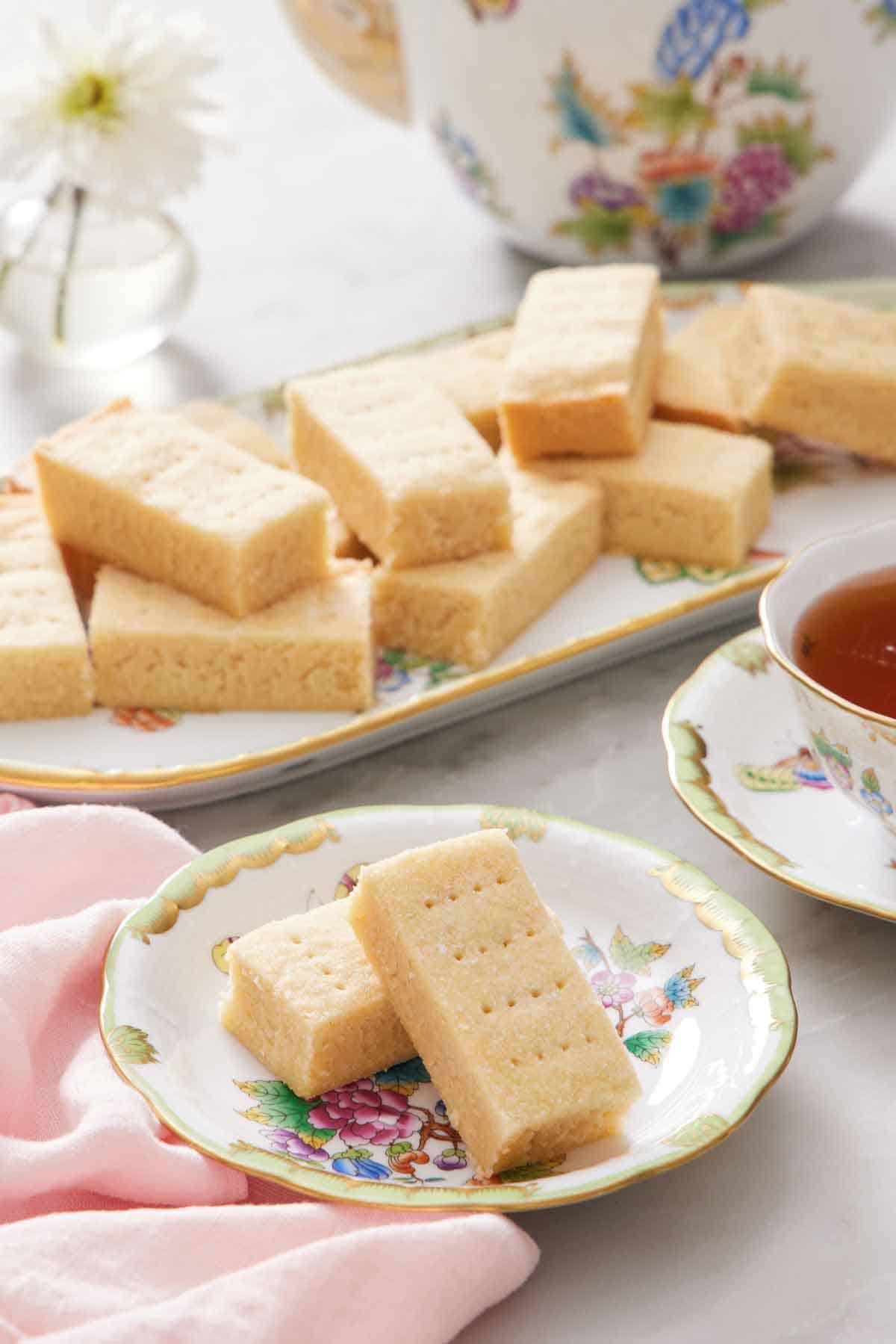
Whether you're new to baking or a seasoned pro, you'll appreciate how straightforward this shortbread recipe is. It requires no fancy equipment or hard-to-find ingredients—just butter, sugar, and flour. Mix them together by hand, bake, and in just a short time, you'll have delicious shortbread that melts in your mouth!
Enjoy these biscuits with a cup of tea or coffee or as a sweet treat any time of day. They also make a great gift for friends and family! Plus, with the customisable options listed below, you can easily add your twist to this classic recipe.
What You Need To Make This Recipe
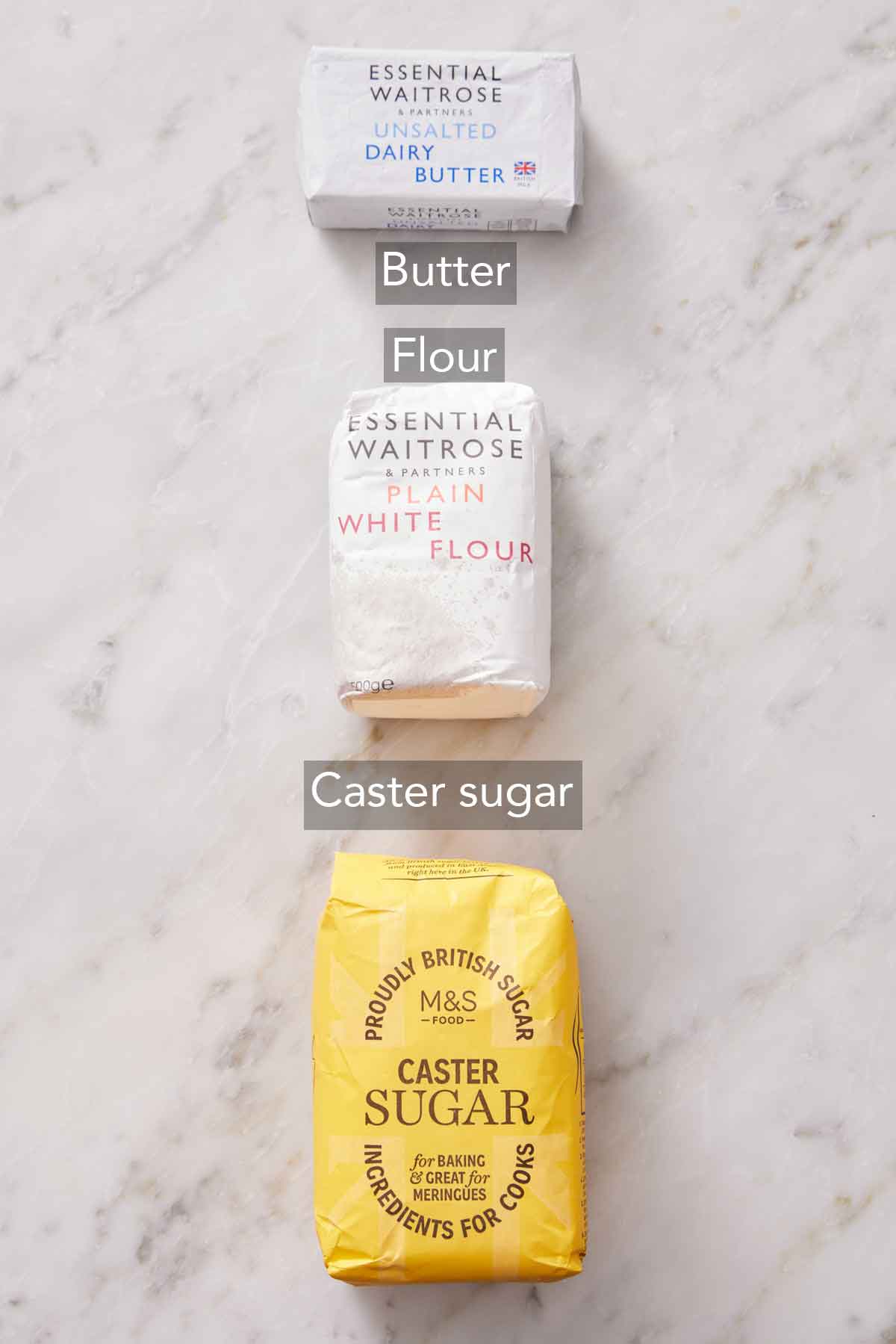
Butter — the key to rich and flavorful shortbread, butter provides the crumbly, melt-in-your-mouth texture that makes these biscuits irresistible. Use high-quality butter for the best results. You can use unsalted butter but if you like your shortbread a touch salty, use salted butter.
Caster Sugar — this fine sugar blends seamlessly into the shortbread dough, giving the biscuit its perfect balance of sweetness without any grittiness. It helps achieve that classic, slightly crisp finish.
Plain Flour — forming the recipe's base, plain flour binds the ingredients together and ensures the biscuits have a tender and crumbly texture. Make sure to measure your flour accurately (by weight) for consistent results.
How To Make Shortbread
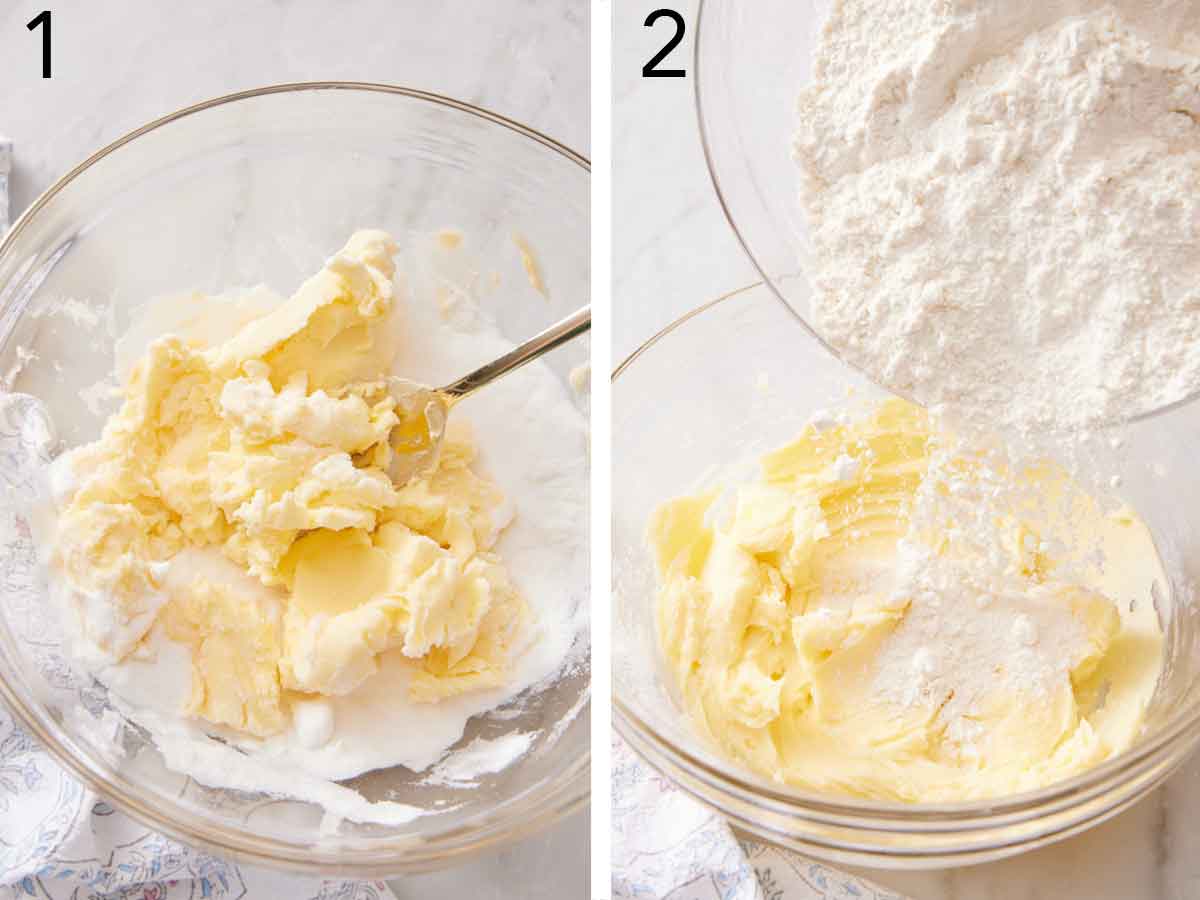
1. In a large bowl, combine the sugar and butter. Stir until well mixed, but do not cream (you don't want to incorporate air).
2. Add the flour, mix until crumbly, then knead it until the dough starts to form in a single clump. Lightly grease a 20cm baking tin. Line it with baking paper for easy removal if desired.
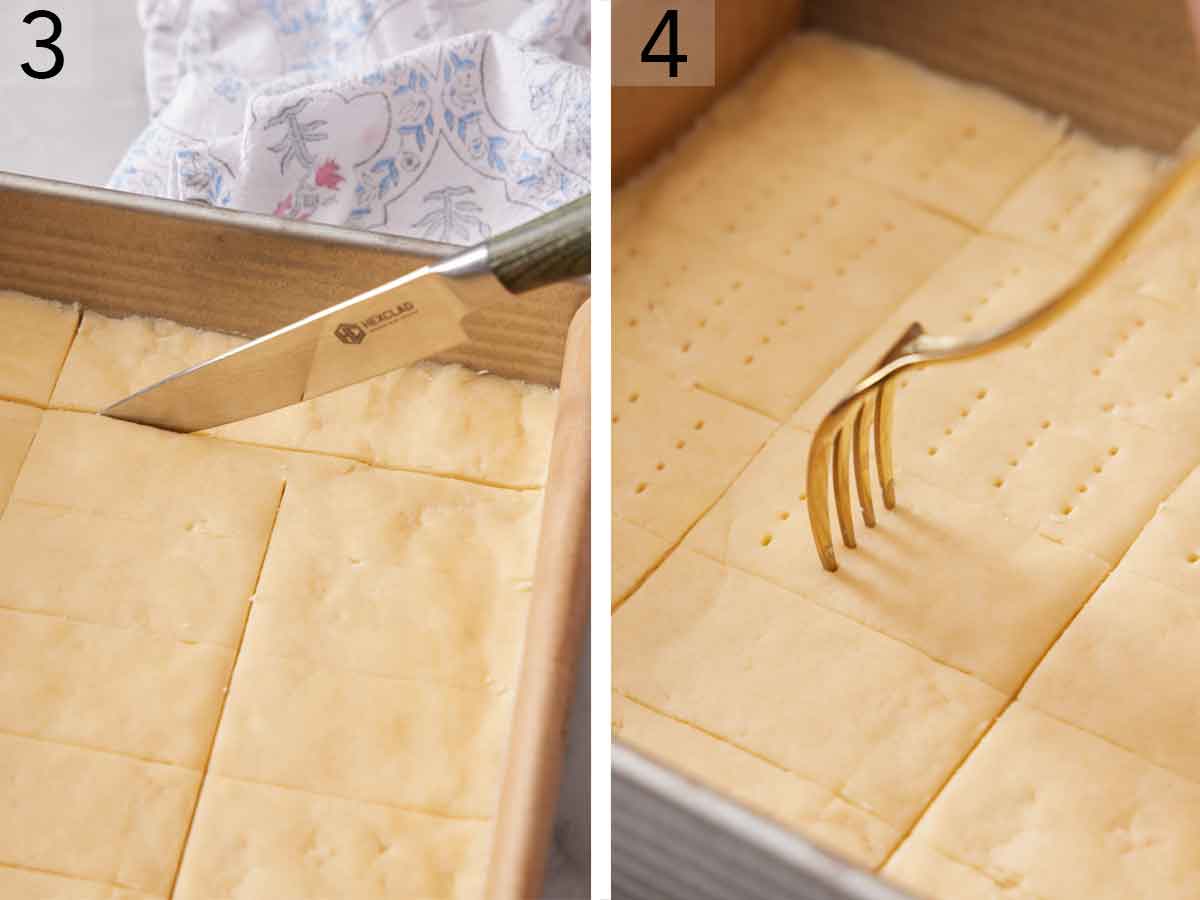
3. Press the dough into the pan and smooth it to form an even layer. Score the dough with a sharp knife or bench scraper, creating 18 bars.
4. Prick the tops a few times with a fork and sprinkle with additional sugar if desired. Bake at 160°C /140°C fan for 40 minutes or until light golden brown. Let the biscuits cool on the pan for a minute, then transfer to a wire rack.
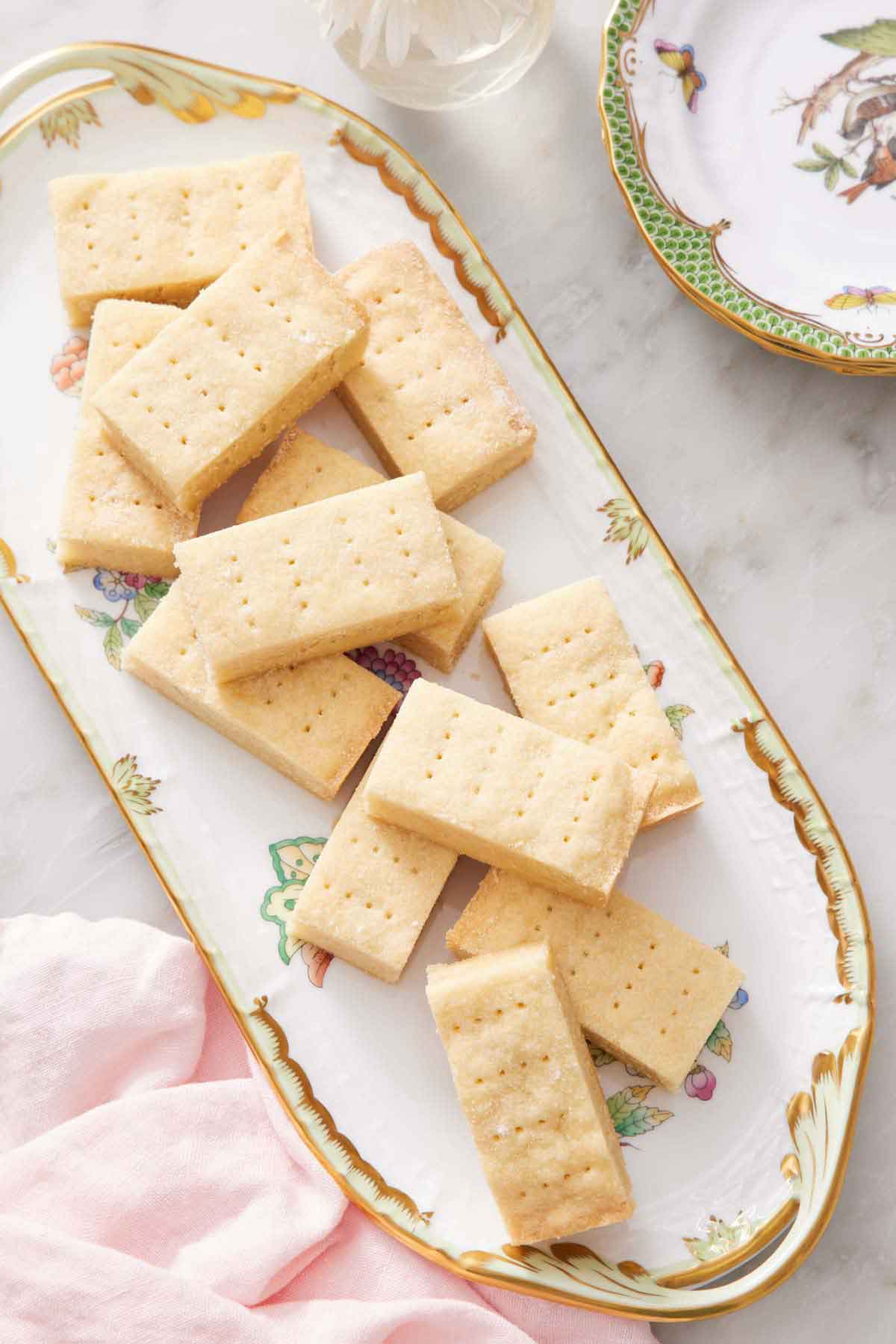
What's The Difference Between Scottish Shortbread And Regular Shortbread?
Scottish shortbread is all about simplicity and tradition. It's typically made with just three ingredients: butter, sugar, and flour. It is pressed into a mold or put into a pan and cut into bars. Scottish shortbread often has a slightly denser, melt-in-your-mouth quality due to a higher butter content.
Other shortbreads can have salt or flavourings added and are often rolled and cut or sliced into shapes.
Why Do You Prick Shortbread?
Pricking shortbread helps to release steam during baking, preventing the biscuits from puffing up and allowing them to bake evenly for that classic flat and crisp texture. It's also traditional to prick the tops with a fork in a decorative pattern, but you can use any sharp object or skip this step altogether if desired.
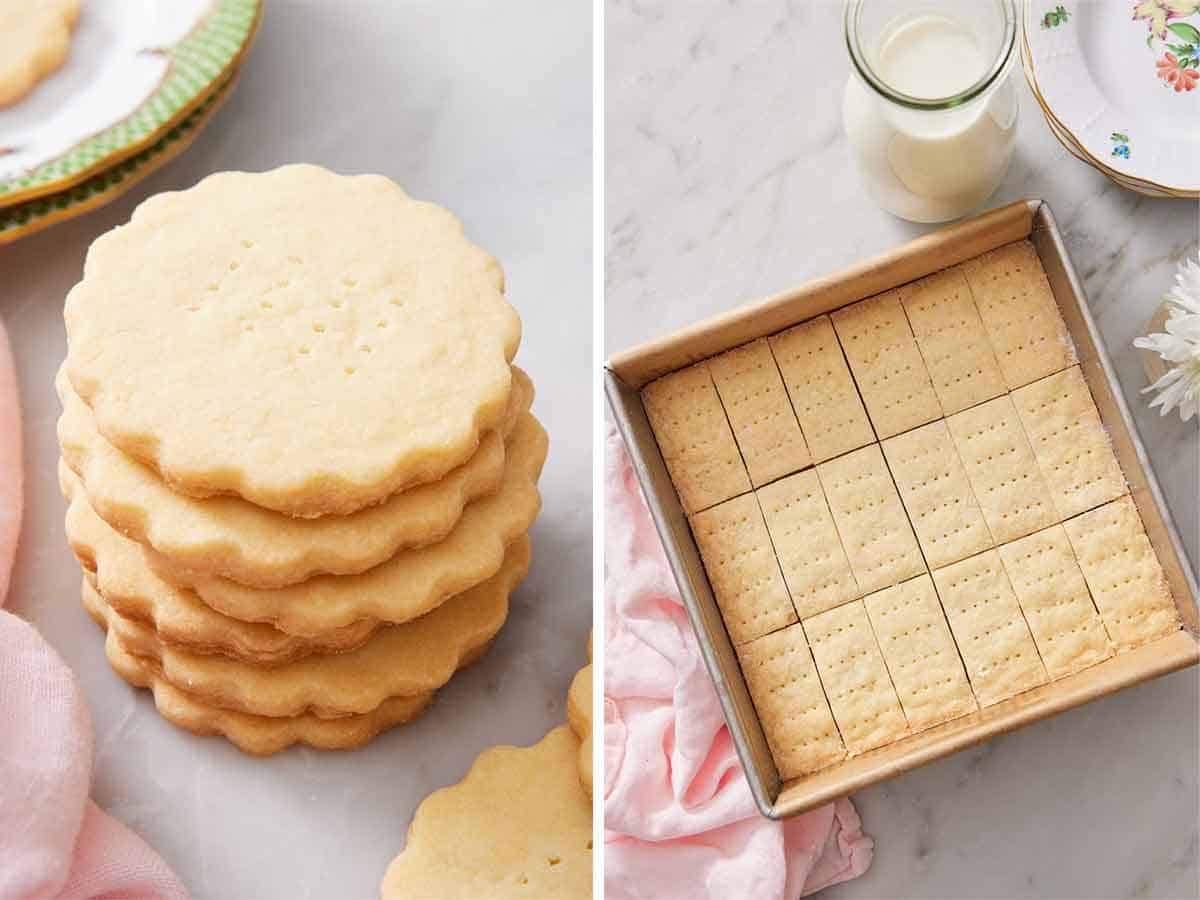
Make Cutout Shortbread Cookies
Once the dough forms into a single mass, wrap it in plastic wrap and press it into a square. Chill for 30 minutes. Roll it to 1 to 2cm thickness on a well-floured surface. For rounds, I like to use a 5cm-6cm fluted cutter. This gives the biscuits a decorative edge that adds to their visual appeal.
To make shortbread fingers, I cut the dough into roughly 2x6cm rectangles. This traditional shape is perfect for dipping into tea or coffee. You can also cut other decorative shapes with various cookie cutters. Bake on a parchment-lined baking tray at 180°C for 15 minutes or until golden brown.
Variations
Add a pinch of spices, lemon zest, or dried lavender to give this classic shortbread recipe a unique twist. For an elegant touch, press the dough into a fluted tart pan, then score it into triangles and cut it once baked. For an extra treat, dip the end of your shortbread in melted chocolate for a delightful flavour and texture combination.
Pro Tips For Making This Recipe
- Soften the butter. Ensure the butter is very soft and easily spreadable before combining it with the sugar. Avoid beating too much air into the mixture, which might cause the shortbread to puff up or spread and lose shape.
- Measure flour accurately. Use a kitchen scale or the spoon-and-level method to ensure you have the correct amount of flour, avoiding too much, which can make the biscuits dense.
- Don't overmix. Mix the dough until it comes together to keep the biscuits tender and crumbly.
- Line the pan with baking paper. This is optional, but it makes removing the shortbread biscuits from the pan much easier, but you can use the excess as handles and just lift them out.
- Cut the baked shortbread while still hot. Scoring the dough before baking is essential for easier cutting once baked, but to get clean, fully separated biscuits, you have to fully cut them right when the pan comes out of the oven. That way, once they cool, they can easily break apart.

Frequently Asked Questions
Butter cookies have a higher sugar ratio and often include eggs, which makes them sweeter and crispier. Shortbread cookies are simpler, with just butter, sugar, and flour, resulting in a rich, crumbly texture.
While you don't have to chill the dough, if you want to prepare the dough ahead of time, you can press it into the pan, wrap it with cling film, and refrigerate for up to 2 days before baking.
Just pop them in an airtight container, ensuring they are sealed tightly and stay fresh for about a week. Store the container in a cool, dry place away from direct sunlight for the best results.
If you've tried this Shortbread recipe, then don't forget to rate it and let me know how you got on in the comments below. I love hearing from you!
Shortbread Recipe
Equipment
- Mixing bowl
- Baking tin
Ingredients
- 250 grams butter softened
- 150 grams caster sugar plus more for sprinkling
- 400 grams plain flour
Instructions
- Preheat the oven to 160°C /140°C fan
- Combine the sugar and butter in a large bowl. Stir them together just until they are well combined, but don’t cream them. (You don’t want to incorporate air.)
- Add the flour and stir until crumbly, then knead it very gently just until the dough comes together in a solid ball.
- Lightly grease a 20cm baking tin. Press the dough into the pan and smooth down the top. Score the dough to make 18 bars. Prick the top all over with forktines, and sprinkle with more sugar if you like.
- Bake for 40 minutes or until light golden brown around the edges. While still hot, cut along the score lines. Let the biscuits cool completely in the pan on a wire rack.
Notes
- Soften the butter. Ensure the butter is very soft and easily spreadable before combining it with the sugar. Avoid beating too much air into the mixture, which might cause the shortbread to puff up or spread and lose shape.
- Measure flour accurately. Use a kitchen scale or the spoon-and-level method to ensure you have the correct amount of flour, avoiding too much, which can make the biscuits dense.
- Don't overmix. Mix the dough until it comes together to keep the biscuits tender and crumbly.
- Line the pan with baking paper. This is optional, but it makes removing the shortbread biscuits from the pan much easier, but you can use the excess as handles and just lift them out.
- Cut the baked shortbread while still hot. Scoring the dough before baking is essential for easier cutting once baked, but to get clean, fully separated biscuits, you have to fully cut them right when the pan comes out of the oven. That way, once they cool, they can easily break apart.







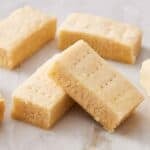




dorothy jacques says
I love these shortbread,my second time. Wish I had discovered them earlier, they are perfect, you are my go to for recipes.